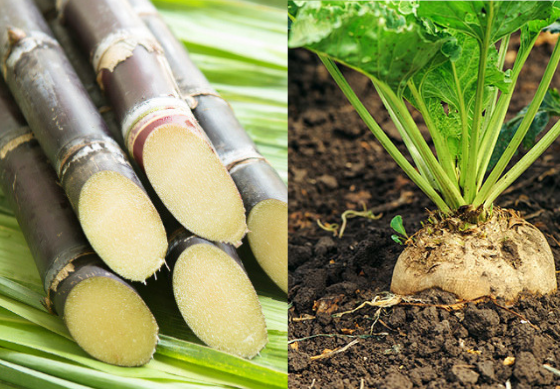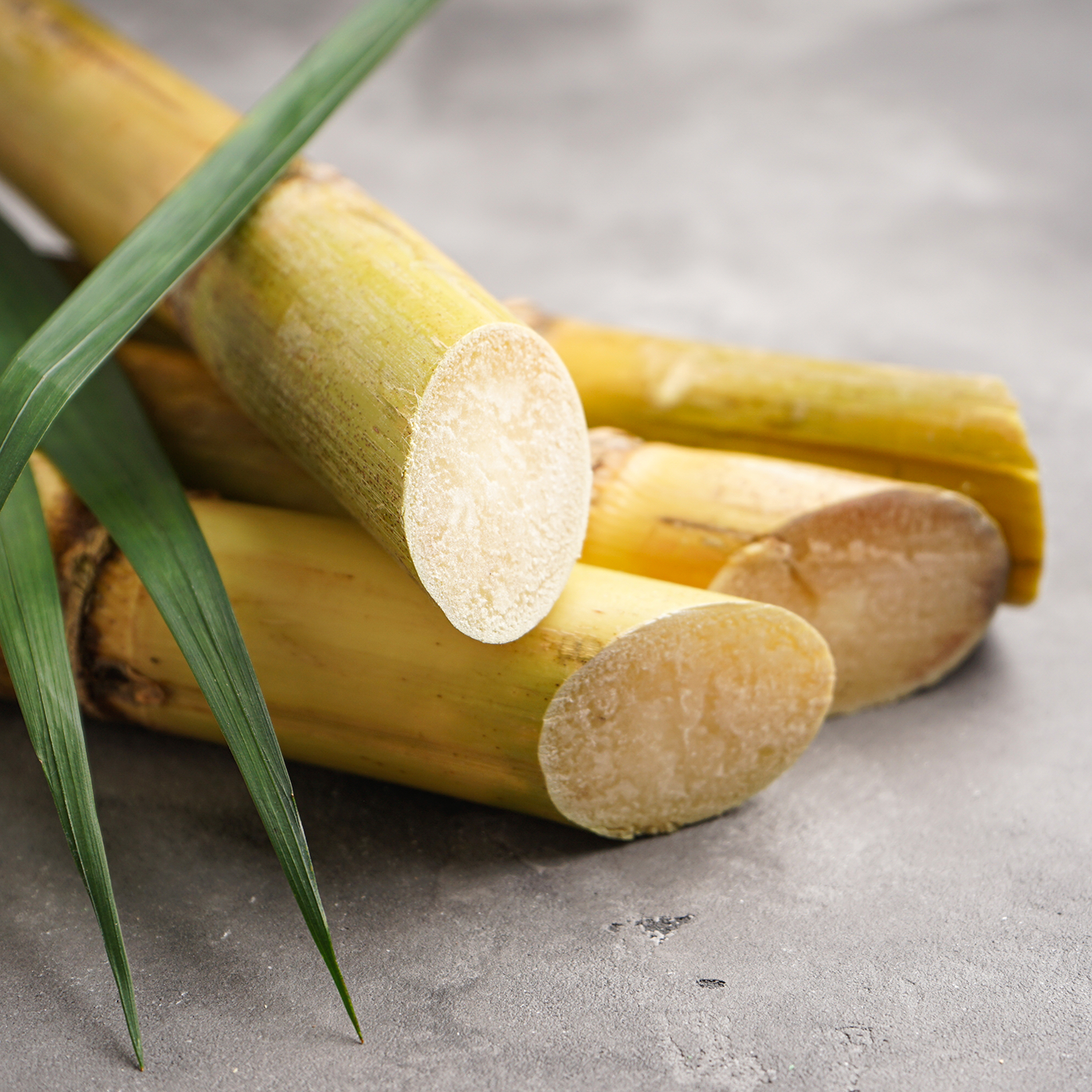All You Required to Understand About Sugar Beet Vs Sugar Cane: Insights Into Their Roles in the Cane Sugar Industry
The sugar market relies greatly on both sugar beet and sugar cane, each offering unique benefits and difficulties. Understanding their farming techniques, geographical circulation, and dietary influences exposes significant differences. As customer preferences change, the market faces pushing demands for sustainability and development. Exploring these elements can offer deeper insights into the future of sugar and their functions in the international market. What growths lie in advance for these important crops?
Summary of Sugar Beet and Sugar Cane
Sugar beet and sugar cane are two key resources of sucrose, each with special features and farming techniques. Sugar beet, an origin veggie, thrives in pleasant environments and is usually expanded in areas with cooler temperatures. It has a high sugar content, normally around 16 to 20 percent, which is extracted via a procedure of slicing and diffusion. In contrast, sugar cane is a tropical grass that grows in warm, humid climates. Its stalks can include 10 to 15 percent sucrose, and the extraction procedure usually includes squashing the stalks to release the juice.Both crops play considerable functions in the worldwide sugar industry, with sugar beet primarily cultivated in Europe and North America, while sugar cane is chiefly grown in countries like Brazil, India, and China. Sugar beet vs sugar cane. This geographical distribution shows the various climatic needs and agricultural methods fit to every plant, influencing their particular payments to sugar production worldwide
Farming Techniques and Expanding Conditions
The farming techniques and expanding conditions for sugar beets and sugar cane differ considerably due to their distinct dirt and climate demands. Sugar beetroots grow in cooler climates with well-drained, productive dirts, while sugar cane prefers warmer temperatures and can tolerate poorer dirts. On top of that, the harvesting strategies for both plants vary, mirroring their unique growing methods and ecological adjustments.
Dirt Requirements Comparison
While both sugar beet and sugar cane are vital resources of sugar, their soil demands show unique preferences that influence cultivation methods and growing conditions. Sugar beets thrive in well-drained, loamy dirts abundant in raw material, with a pH variety of 6.0 to 8.0. This kind of soil supports their deep taproots, enabling nutrient absorption. Conversely, sugar cane chooses fertile, sandy loam or clay soils that retain dampness, preferably with a pH in between 6.0 and 7.5. The root system of sugar cane is much more considerable, needing dirt that can sustain its development in an extra water-retentive atmosphere. These differing soil requirements demand tailored agricultural practices to optimize yields for each plant, emphasizing the value of dirt monitoring in their cultivation.
Climate Versatility Differences

Collecting Methods Review
Collecting strategies for sugar beet and sugar cane differ considerably as a result of their unique cultivation approaches and expanding problems. Sugar beet is usually collected mechanically making use of specific tools that uproots the plants and separates the origins from the foliage. This process is typically performed in cooler months to avoid spoilage. In comparison, sugar cane harvesting often includes hand-operated labor or mechanized cutters, where stalks are reduced close to the ground. This strategy is carried out throughout the dry period to reduce the dampness material, which can influence sugar yield. Furthermore, the timing of the harvest is crucial, as both plants need to be gathered when they get to peak sugar concentration for efficient processing.
Geographic Distribution and Production Data
Both sugar beet and sugar cane serve as important sources of sucrose, their geographic distribution and production stats expose significant distinctions. Sugar cane generally grows in exotic and subtropical environments, with significant manufacturing locations consisting of Brazil, India, China, and Thailand. In comparison, sugar beet is mainly cultivated in warm regions, with leading manufacturers situated in Europe, the United States, and Russia.According to recent statistics, global sugar cane manufacturing greatly surpasses that of sugar beet. In 2021, sugar cane accounted for approximately 79% of total sugar manufacturing worldwide, while sugar beet added around 21%. Brazil stays the world's largest sugar manufacturer, mostly from sugar cane, generating over 38 million statistics heaps every year. At the same time, the USA is among the top sugar beet manufacturers, generating regarding 5 million metric tons each year. Sugar beet vs sugar cane. These data underscore the crucial duty each crop plays in the global sugar sector

Nutritional Differences and Wellness Impacts
The dietary structure of sugar beet and sugar cane varies significantly, influencing their respective health impacts. Sugar beet tends to include greater degrees of specific minerals and vitamins, while sugar cane offers a various set of nutrients. Understanding these differences is important for reviewing their impacts on health and dietary selections.
Nutrient Make-up Comparison
When contrasting the nutrient composition of sugar beet and sugar cane, considerable differences emerge that can affect wellness results. Sugar beets are recognized to supply a greater focus of vital nutrients, consisting of vitamins B6 and C, potassium, and magnesium. On the other hand, sugar cane tends to have reduced degrees of these nutrients, mainly functioning as a carbohydrate resource. Sugar beets likewise include dietary fiber, which is advantageous for gastrointestinal wellness, while sugar cane lacks this visit here part. Furthermore, the existence of anti-oxidants in sugar beetroots contributes to possible health and wellness benefits, unlike sugar cane, which is largely made up of sucrose. These differences highlight the differing dietary accounts of both resources, which can affect consumer choices and nutritional considerations.

Health And Wellness Results Summary
While both sugar beet and sugar cane are extensively used for sugar production, their distinctive nutritional profiles bring about varying wellness impacts. Sugar beet generally consists of greater levels of minerals and vitamins, such as potassium and magnesium, adding to better general nutritional value. On the other hand, sugar cane's juice is abundant in anti-oxidants, which may provide added wellness benefits.However, both resources mostly generate sucrose, which, when consumed in excess, poses risks such as weight problems, diabetic issues, and heart illness. The glycemic index of sugar cane is commonly somewhat less than that of sugar beet, potentially making it a better choice for blood sugar management. Inevitably, small amounts is crucial for both types to mitigate negative health and wellness influences related to high sugar intake.
Ecological Factors To Consider in Sugar Production
Sugar manufacturing from both sugar beet and sugar cane offers economic benefits, it additionally elevates considerable environmental concerns. The farming of these plants often entails considerable land usage, which can cause habitat destruction and loss of biodiversity. Additionally, using fertilizers and chemicals in sugar farming adds to soil destruction and water air pollution, influencing neighborhood ecosystems.The high water consumption required for irrigation, specifically in sugar cane production, aggravates water shortage concerns in some regions. In addition, deforestation for broadening sugar cane vineyards has actually been linked to boosted greenhouse gas exhausts, even more adding to climate change.Sustainable farming methods, such as crop turning and natural farming, are crucial to alleviate these ecological impacts. Sector stakeholders are significantly recognizing the demand for liable cultivation techniques to assure the long-lasting viability of sugar production while lessening injury to the earth.
Economic Value in the Global Market
The ecological challenges related to sugar production underscore the requirement to analyze its economic significance in the global market. Sugar beet and sugar cane are critical to the farming economy, adding significantly to the incomes of millions worldwide. In 2022, the global sugar market was valued at roughly $50 billion, with sugar cane accountancy for most of production. Countries such as Brazil, India, and China are leading manufacturers, influencing global supply chains and pricing structures. The competition in between sugar beet and sugar cane also affects regional economies, as farmers pick plants based upon market demands and climatic problems. Additionally, the sugar industry supports ancillary sectors, consisting of food processing and biofuel manufacturing, enhancing its general economic impact. As customer choices shift towards healthier alternatives, the financial dynamics of sugar manufacturing might advance, demanding ongoing evaluation of its market importance in an altering worldwide landscape.
Future Trends and Developments in Sugar Production
As the worldwide need for sugar remains to evolve, developments in sugar manufacturing are arising to deal with sustainability and performance challenges. One noteworthy fad is the enhanced adoption of accuracy agriculture innovations, which make it possible for farmers to maximize returns while lessening ecological impacts. In addition, developments in breeding methods, such as CRISPR genetics editing, are being checked out to develop sugar crops with enhanced resistance to bugs and illness, thereby reducing the need for chemical inputs.Moreover, the assimilation of renewable resource resources in sugar processing plants is getting traction, aiding to lower carbon footprints. The pattern towards bioprocessing is also considerable, as firms seek to transform spin-offs into value-added products like biofuels and bioplastics. Lastly, consumer choices are moving towards all-natural sweeteners, prompting research study right into different resources like stevia and monk fruit, which may reshape the landscape of the sugar industry in the coming years.
Regularly Asked Questions
Exactly How Do Sugar Beet and Sugar Cane Taste Differently?
Sugar beet and sugar cane exhibit distinct flavor profiles. Sugar beet has a tendency to have a slightly natural sweet taste, while sugar cane supplies an extra robust, syrupy sweetness, contributing to their important source distinct cooking applications and choices amongst consumers.
Can Sugar Beet and Sugar Cane Be Used Interchangeably in Recipes?
Sugar beet and sugar cane can be used reciprocally in recipes, though their flavors and sweet taste levels may vary a little. Adjustments may be essential to attain the preferred taste and structure in culinary applications.
What Are the Spin-offs of Sugar Beet and Sugar Cane Handling?
The spin-offs of sugar beet and sugar cane handling consist of molasses, bagasse, and pulp (Sugar beet vs sugar cane). These materials are utilized in pet feed, biofuel manufacturing, and different check that commercial applications, improving sustainability and reducing waste in the sugar market
Are There Any Alternate Uses for Sugar Beet Besides Sugar Production?
The alternate usages for sugar beet expand past sugar production. They consist of livestock feed, biofuel manufacturing, and the extraction of plant-based chemicals, showcasing sugar beet's adaptability within agricultural and industrial applications.
Just How Does Climate Modification Affect Sugar Beet and Sugar Cane Crops?
Climate change impacts sugar beet and sugar cane crops by altering temperature level and precipitation patterns. Enhanced warm tension, drought, and moving pest populations can reduce yields, challenging farmers to adapt their methods for lasting production.